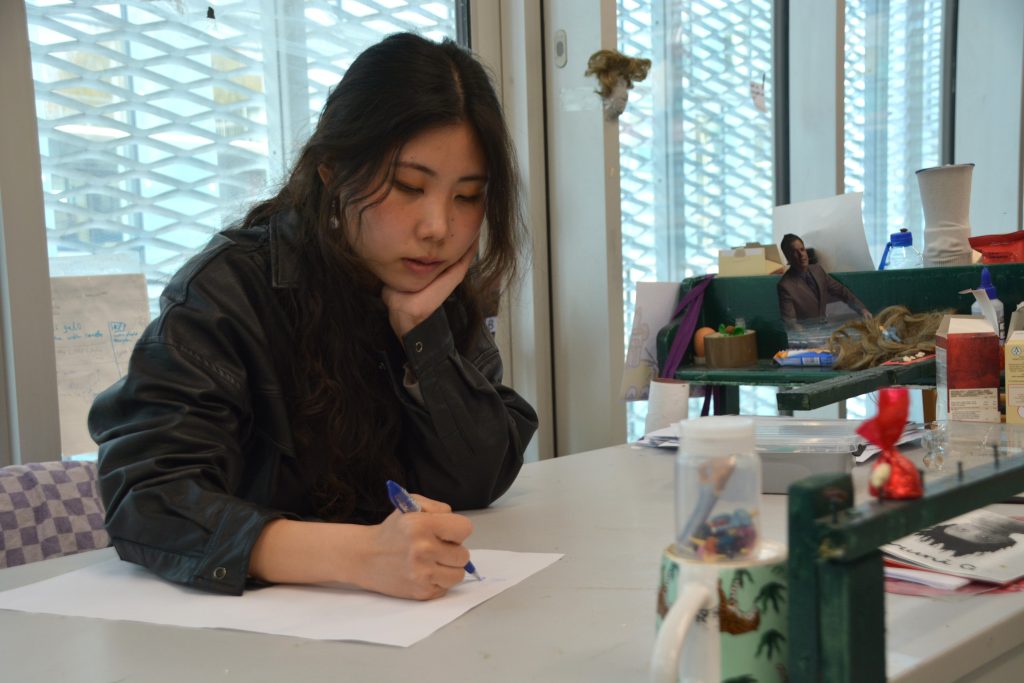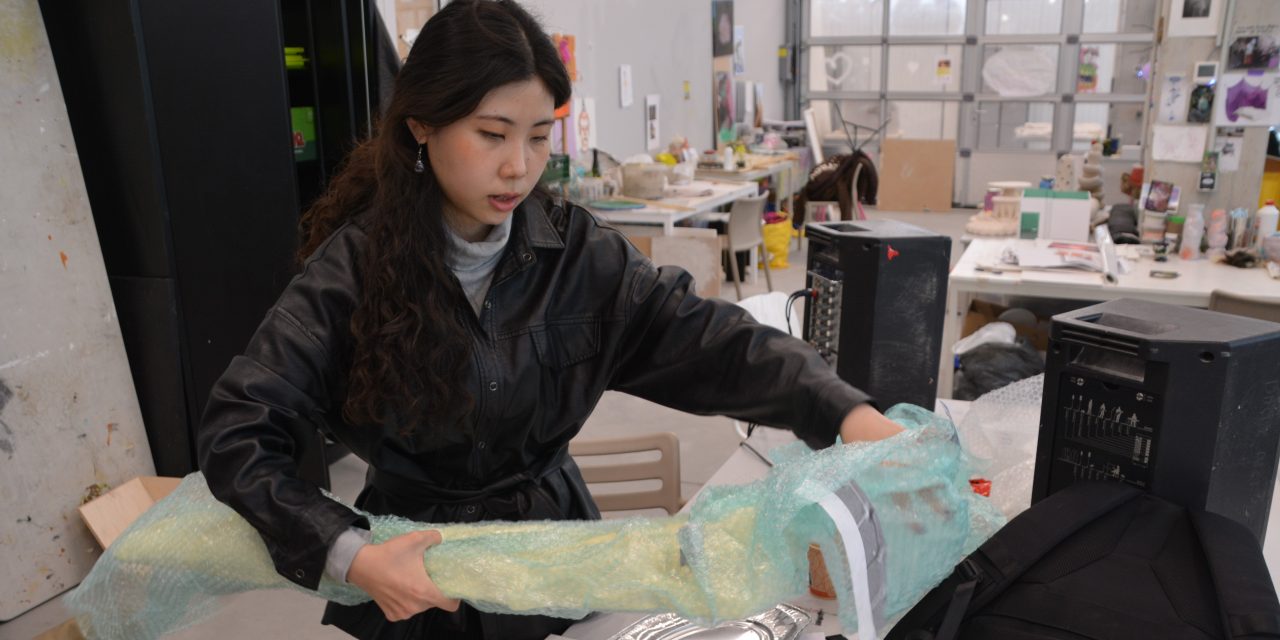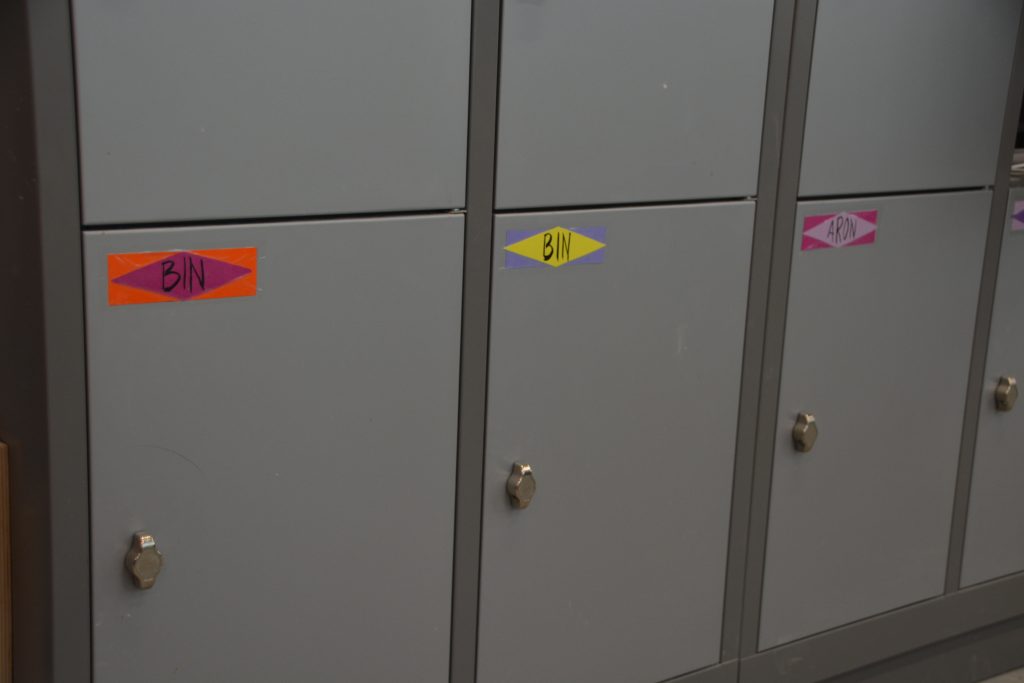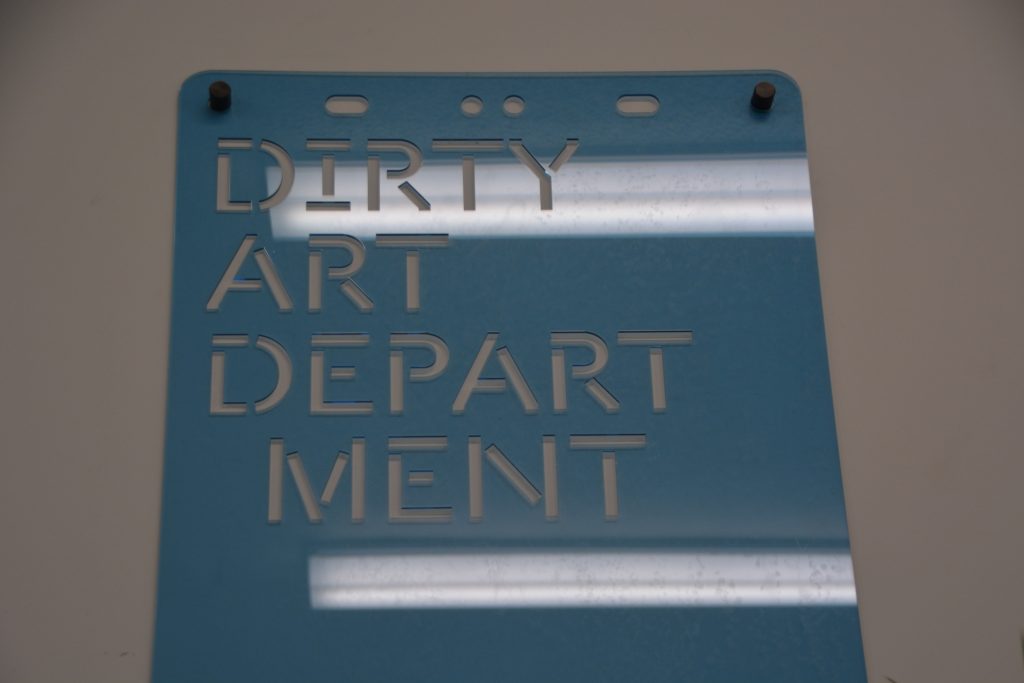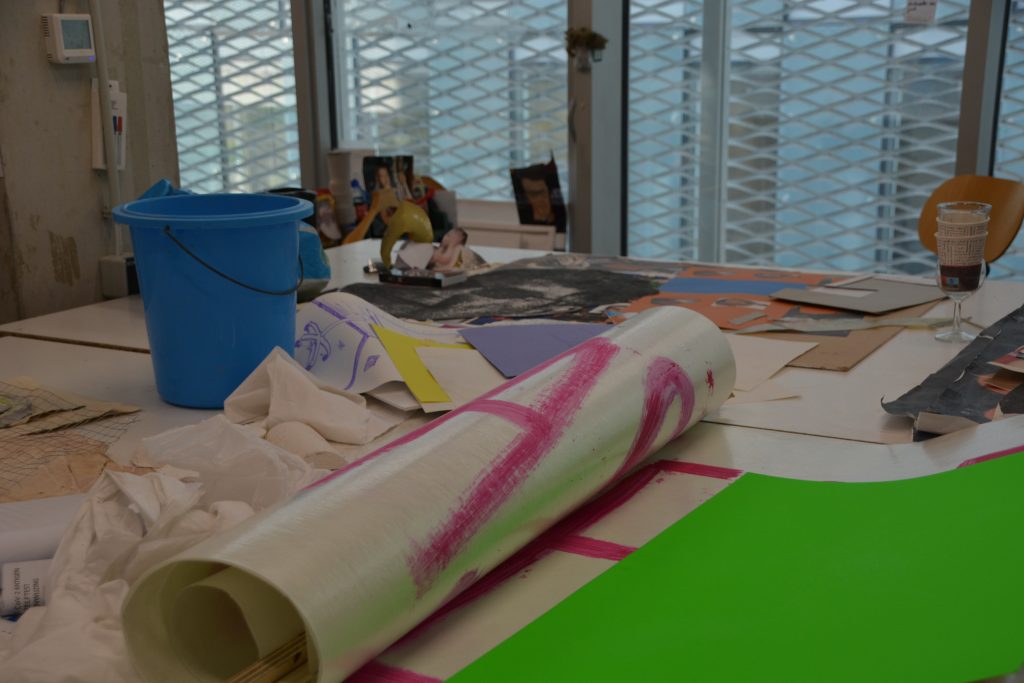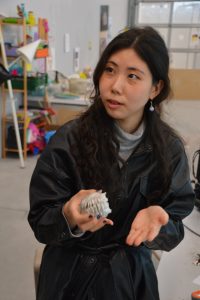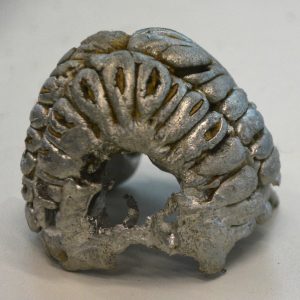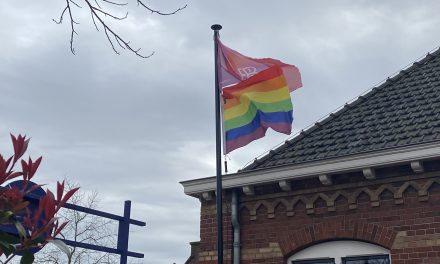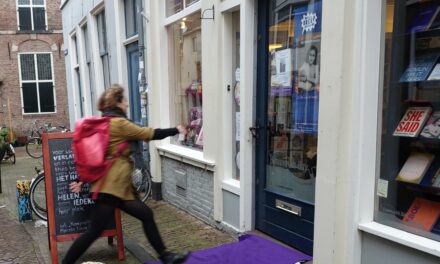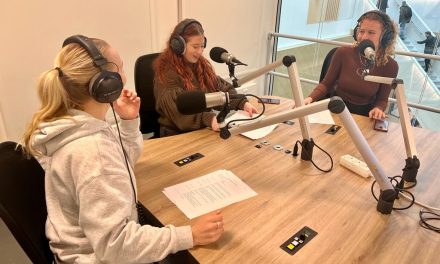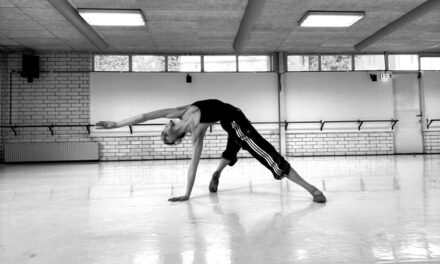Seulbin Roh has always struggled with the sense of belonging, causing her to find an outlet for her emotion within art. With naturalistic looking sculptures she now tackles topics such as psychological health and emotional vulnerability.
“This is our bar!” says Seulbin Roh as she disappears through the closet that is standing at the end of the vast art studio located in the Rietveld Academie in Amsterdam. The closet has a big hole in its back and acts as a passageway to their improvised bar. An area that was originally designed to be a workspace was transformed into a place for drinks and hangouts. She stores some of her art there. A slight giggle is heard before the all-dressed in black Seulbin pops back out holding two large stick-looking figures, wrapped in shimmering bubble wrap. “I’ve been working on the subject of mental illness and psychological health now for many years and I question what is normal, who decides what’s normal. I want to get rid of the stigma around this topic”, she says while unwrapping her art.
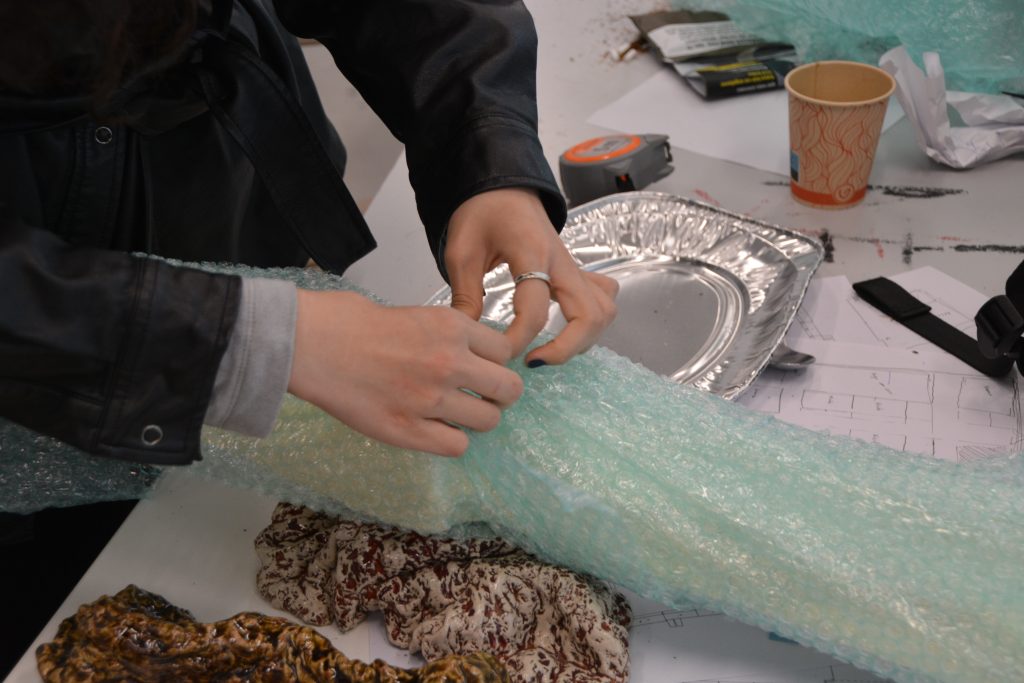
Seulbin Roh is 27 years old and grew up in Frankfurt, Germany, in a South Korean household. Her parents come from an artistic background. Her father is an architect and her mother has a background in the fashion industry. By now her parents have gone back to South Korea and are living there in the countryside.
Throughout her youth, Seulbin has been moving back and forth between Germany and South Korea. She then came to the Netherlands to study fine arts at HKU in Utrecht and is now doing her masters at the dirty art department at the Rietveld Academie in Amsterdam.
Seulbin uses her art as a therapeutic outlet because her artistic epiphany did not come to her in an easy way. In her teens, she found herself struggling with deep depression and started to experience frequent hallucinations. Slowly the discomfort of them turned into inspiration for art.
“I remember it was in spring, I was in my parents’ garden drinking coffee. Everything in the garden, the grass, the flowers just started to blend together. I saw a strong red color and weird floral shapes and started to hear a weird sound. I was really scared at first.”
There is a sound of tearing soft plastic as she rips the last piece of tape off the bubble wrap. It unveils a matte yellow-beige foam sculpture and she positions it on the big workshop table. Next to the structure some of her older work has been positioned out. She switches her focus to them and picks up a glistening red and white intricate sculpture, it’s lifelike and vibrant. “I had my first solo exhibition in Utrecht at EXbunker and for that, I made these. These are ceramic pieces.”
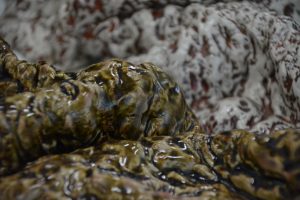
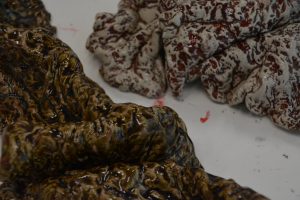
Due to her background, being caught between two continents, she struggles with the sense of identity. “Probably this confusion led to some of my depression,” she says. Through her own experiences with mental health issues, she has found an interest in, for example, people who have been diagnosed with schizophrenia. She therefore wants to raise awareness on topics such as mental illness and psychological health. Even though she draws inspiration from her own life, Seulbin makes it clear that she doesn’t want her art to be self-centered.
“I notice that when I make art and talk about my art I don’t talk about my Korean or German background. People love to talk about their background but I do not. I don’t even like to talk about myself.”
She has been living in the Netherlands for eight years now. Thankful for the opportunity of the creative freedom it has given her, she still would not say she feels like this is her home. It is the same recurring feeling she always has struggled with. The feeling of not knowing where she belongs. “In South Korea, I am not one hundred percent Korean but in Germany, I am also not one hundred percent German”. She has found herself in conflicting positions because of her cultural background. People befriended her just because of her South Korean roots, hoping to connect with her about cultural phenomena such as K-POP or feeling judged by fellow German speakers for not being fluent enough in german.
Where she feels the most at home is her parent’s house in South Korea and their garden. Nature has always played a big role in her life, from how she found her artistic calling to how she later found inspiration for her work and the feeling of freedom. Bright red colors, fungi-inspired sculptures brought to life with ceramics and naturalistic shapes are all prominent in how she creates. “I suggest spending time in nature because that is a place where you can be truly free.”
While she is carefully putting down her red and white ceramic art piece she moves one of the foam structures that are positioned on the table. The piece she picks up is bigger than the ceramic one and has a striking contrast with its pale color. She easily holds the light structure in her hands. The surface of the piece, like the bark of a tree, is filled with wavy patterns.
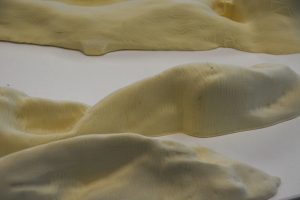
The foam structure is one of her newest works which she is going to use for her graduation show at the prestigious Rietveld Academie. Staying true to her artistic beginnings, the art pieces presented in this show will also focus on destigmatizing mental health problems. When comparing how she felt going into her first solo exhibition in 2022 to now, she feels much more confident in her work and her vision. The material of her artworks might have changed but her dedication has not.
“I just feel like fuck it, I’m just gonna do what I want to do. And I know it works.”, she says while reaching for the bubble wrap to put her work back into the bar.
